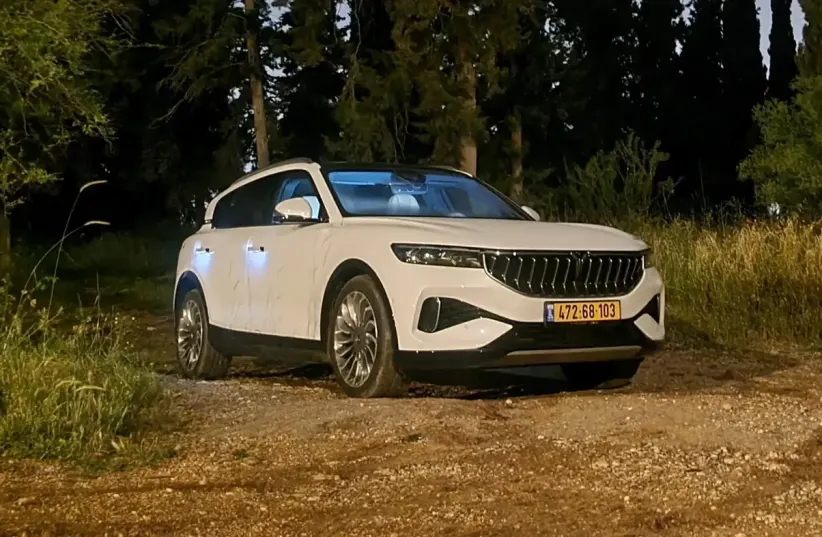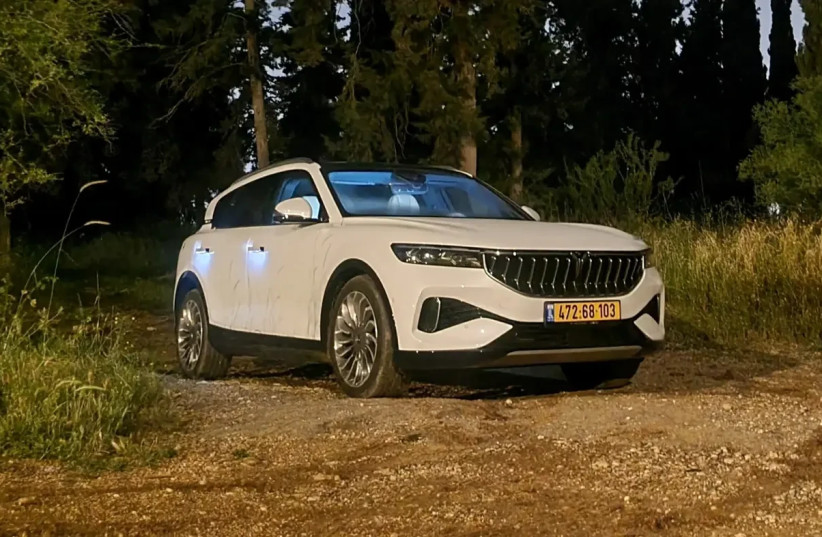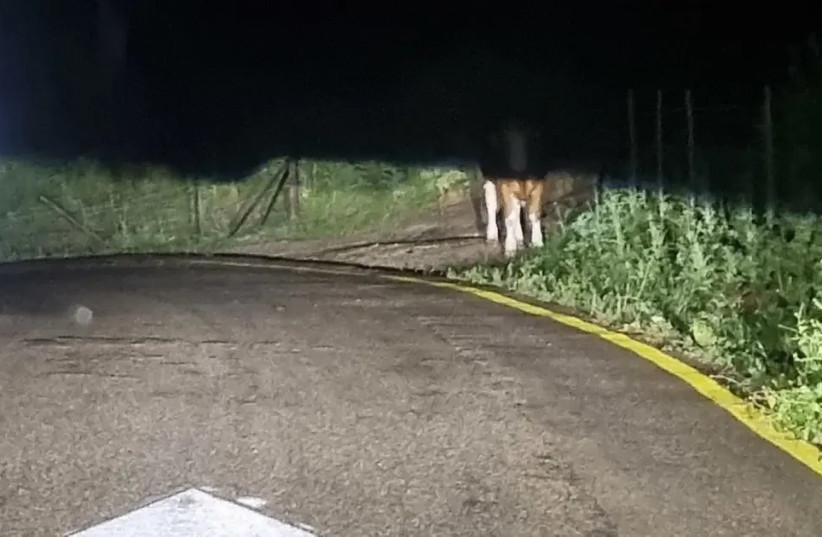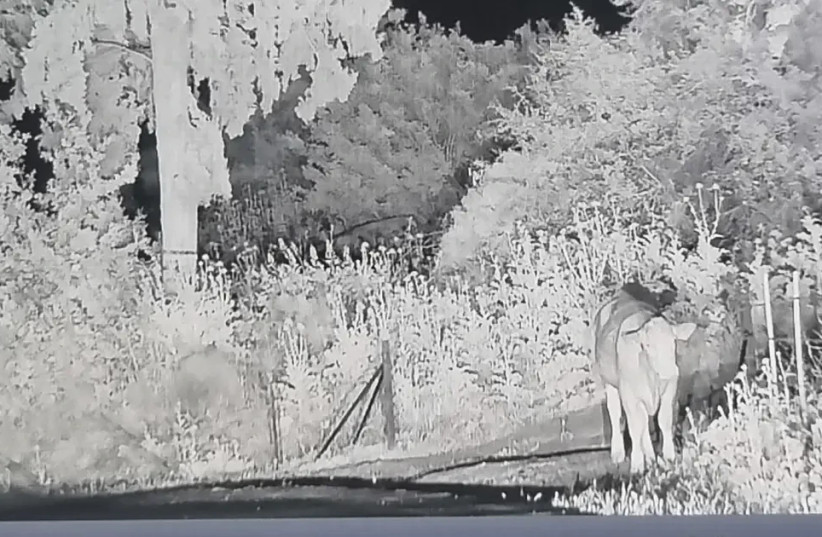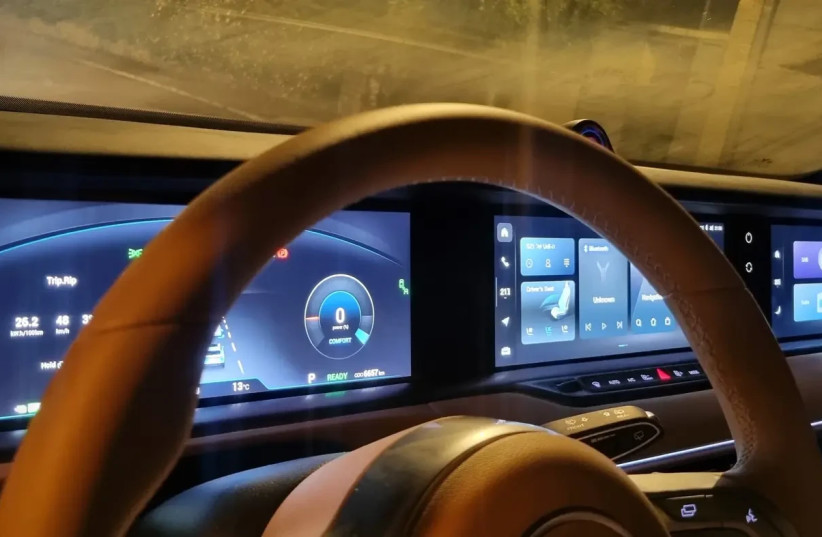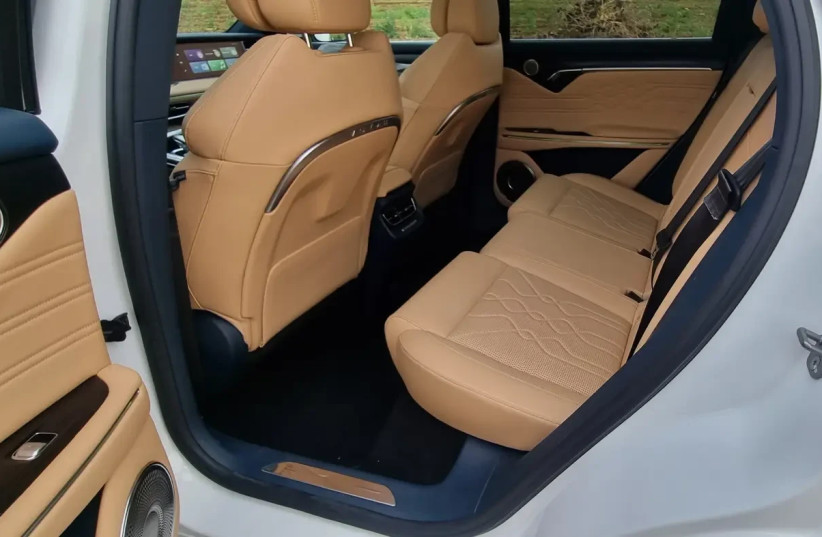Wars no longer break out in darkness alone. Tanks, helicopters, and combat aircraft are equipped with night vision systems. Even infantry forces increasingly rely on them, not just special units, and such systems were among the most sought-after and donated items at the beginning of the Iron Sword conflict.
But there's another war where night vision systems can assist. During nighttime, fewer accidents occur because the roads are emptier, but their consequences are deadlier. It's a result of fatigue but also our difficulty in seeing pedestrians, wildlife, and other vehicles on poorly lit roads.
The Cadillac DeVille was the first mass-produced car equipped with a night vision system, back in 2000. Unlike other safety innovations initially launched in luxury cars, such as airbags or laser sensors, night vision systems quickly made their way to ordinary cars. A quarter of a century later, the system remains exclusive equipment primarily found in luxury models.
The BYD F5 we drove tonight is the cheapest electric car in the country with the system installed, priced at 400,000 shekels. Only one car is cheaper with such a system, the French crossover DS7 Crossback ELYSÉE, priced 5,000 shekels lower. Other models with night vision systems, without chains and cannons, are mainly double the price, like the Cadillac Escalade, Porsche Panamera, and Mercedes S-Class.
In the Chinese BYD, the system integrates as part of a technological abundance: three screens, air suspensions allowing terrain height adjustment, a panoramic roof dimmable by electric current, massage seats, and more. All of them, except the whole dashboard, which can rise and fall, we have already encountered in luxury cars one way or another. But is a night vision system such a game-changer?
It wasn't a regular test. We met the F5 with its launch in the country over a year ago. Then it was the first Chinese SUV in the country, with a price tag of a German car. Since then, NIO, XPeng, and Zeekr have arrived in the country, and 400,000 shekels no longer seem exaggerated for a Chinese car. The F5 itself has already found almost 300 customers in the country.
This time we pressed the START button only after sunset. The goal was a night drive testing the night vision system in various scenarios. For the first, we didn't need all of its 489 horsepower. At the Safari in Ramat Gan, they agreed to open the savannah gates for us even during off-hours when it's closed to visiting cars, to see how much the system would help us identify wildlife in a completely dark environment.
The safari organizes tours like these during the night safari, which includes visits to the animal park itself, including with hunters active at night, such as lions. Ilan, my assistant who has been accompanying me in the savannah for five years and also serves as a train driver, but this time equipped with a tender, watches over me, and soon, also from a security guard.
Although there are many streetlights around the safari, the savannah is dark. Especially beyond the car headlights, which I am asked not to turn off to ensure that the animals themselves see the car and are not surprised. The BYD has a night vision system based on infrared, with an official range of 150 meters, to be effective even on a highway.
The system is entirely driver-oriented: although the F5 has two 12.3-inch multimedia screens for operation, one to the right of the driver and a separate one for the passenger in front, the night vision display can only be obtained on the third screen of the same size used as an instrument cluster. At least the operation is easy, with a press of one of the buttons on the steering wheel, the gray image takes over the instrument cluster.
Here, turning the head won't help; you need to direct the car itself toward the area you want to observe. Because the system is aimed at highways, not for nature lovers, the camera is located high on the grille and looks far ahead, so I can miss animals very close.
Again and again, I look ahead; through the front window, I see through the beams of the headlights zebras or hippopotamuses, walking with them. But the moment I look down at the screen, I see another herd further, hidden from infrared eyes. Two groups that might be playing or clashing over territory, or are jealous around the lake.
The hippo car lover identifies the two cars that stopped to observe on the road, approaching with interest. The problem is that although with a length of 4.90 meters, a width of 1.95 meters, a height of 1.64 meters, and a wheelbase of 2.96 meters, the F5 is quite a large crossover weighing 2.4 tons, the African ungulate weighs about 1.8 tons. And if it is disappointed with the conservative design overall, its tantrums are not kicking the door in the face of classic drivers. For the first time, I sense a bit of tension in Ilan's voice, pointing to me with his hand to move towards the shoulder. "I'll block it," he suggests as the two cars retreat back into the darkness and toward the gate, leaving the Jordanian horse behind us.
From the safari, I head north. Destination: Ramat Menashe. Despite the abundance of technology, the operation is simple: the F5 did not give up physical operating buttons for climate control, for example. The leather that envelops the seats, good to remember after the safari visit, does not breathe or pant once but rather artificial.
The front space is very good, the seats are electrically adjustable, heated, and ventilated. Behind, there's even more room, including air conditioning outlets, and two USB ports, regular and C. The generous 560-liter cargo compartment, with hooks for hanging bags. There's also another small cargo compartment, with a volume of 72 liters under the "engine cover." With this size, there could have been room for a third-row seat here.
On Highway 6, I climb to 120 km/h. Ahead and behind are two electric motors with a combined output of 489 kW, dual drive, and a battery with a capacity of 106 kWh, essential for a reasonable range on a highway. Accelerations, especially in sport mode, require restraint from me not to become the next police spokesperson's message about a driver caught speeding.
But what's more interesting is the ability to control the vehicle's height. When switched to "sport," the ground clearance shrinks from 17 cm to just 12 cm. This is felt later on the smaller roads, where the F5 demonstrates decent control over roll angles for a heavy and tall vehicle, checked more than in normal suspended modes. Comfort is hardly compromised. It's not a Cayenne from a behavioral standpoint, but the F5 is not embarrassed. In off-road mode, the ground clearance rises to 21 cm. We'll check that soon too.
Highway 66 is completely dark except at lit intersections. I revert to the night vision screen, which also opens up the dark stretches for me. If someone were crossing here on foot at this hour, I'd likely see them. Night vision also provides an advantage when facing oncoming vehicles with high beams: a glance downward at the screen prevents glare and allows me to continue seeing what lies ahead.
A stop for charging in Yokne’am, the Prius is capable of fast charging with a power output of only 125 kWh, and I continue towards the Megiddo Junction. Just before the entrance to the Jezreel Valley, I turn right into the dark forest. After just a few hundred meters, the night vision system saves me from a late identification of a dark bus parked on the side of the road.
Navigating through the elevated hanging situation is tricky. On one hand, I feel safer on the hills; on the other hand, I remind myself that the Prius doesn't have a spare wheel. Again, night vision provides security here, although it's a shame the display doesn't sync with pronunciation. The advantage is that I can see far ahead without switching to high beams, disturbing wildlife and other hikers in the area. The downside is that continuous driving through the screen is quite tiring, requiring constant lifting of the head to see through the windows and back to the screen. The screen display is a bit too narrow; I would be happy if it had a wider coverage area. One day, we might get the road picture on the windshield, and that would be perfect.
At the end of the night, I'm averaging about 24.5 kWh per 100 km. That translates to an actual range of around 420 km. Driving only in eco mode and with fewer accelerations will exceed the respectable 450 km threshold.
Night vision is a worthy addition, not just a gimmick. It's a feature I'd particularly welcome in touring cars like the new Toyota Land Cruiser. Even it would be more expensive than the Prius, which with a real-world range of over 400 km could itself be a night trail experience, if only you'd stash a spare wheel in the cargo hold for emergencies.
The Prius continues to impress with its equipment and technology. It's not perfect, but at its price - about 200,000 shekels less than Mercedes, Audi, or BMW of the same size - you don't need night vision to see the value for money, something cars in this market segment usually don't excel at.
Toyota Prius: Technical Specifications
Price: NIS 400,000
Competitors: Audi Q8 e-tron, BMW iX3, Xpeng G9
Liked: Spaciousness, equipment, performance, and price
Disliked: Charging speed, unfamiliar brand
Engine and Drive: Two electric motors, 489 hp, 73 kg/m, dual-drive.
Battery: 106 kWh
Transmission: Direct transmission, automatic
Performance (manufacturer): 4.4 seconds from 0 to 100 km/h, 200 km/h top speed, 500 km combined range
Warranty: 5 years unlimited mileage on the car, 8 years or 160,000 km on the battery
Rating: 9/10
